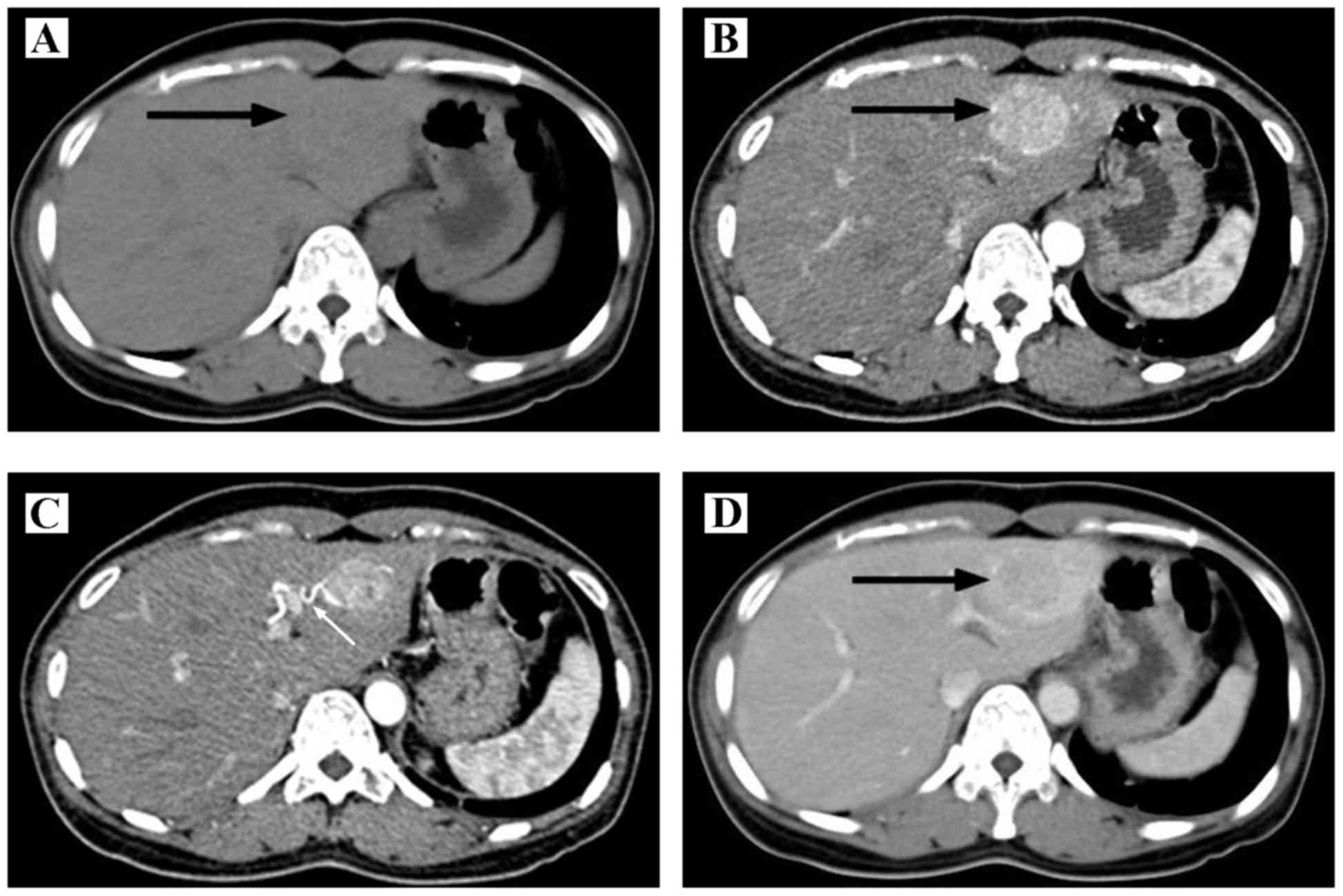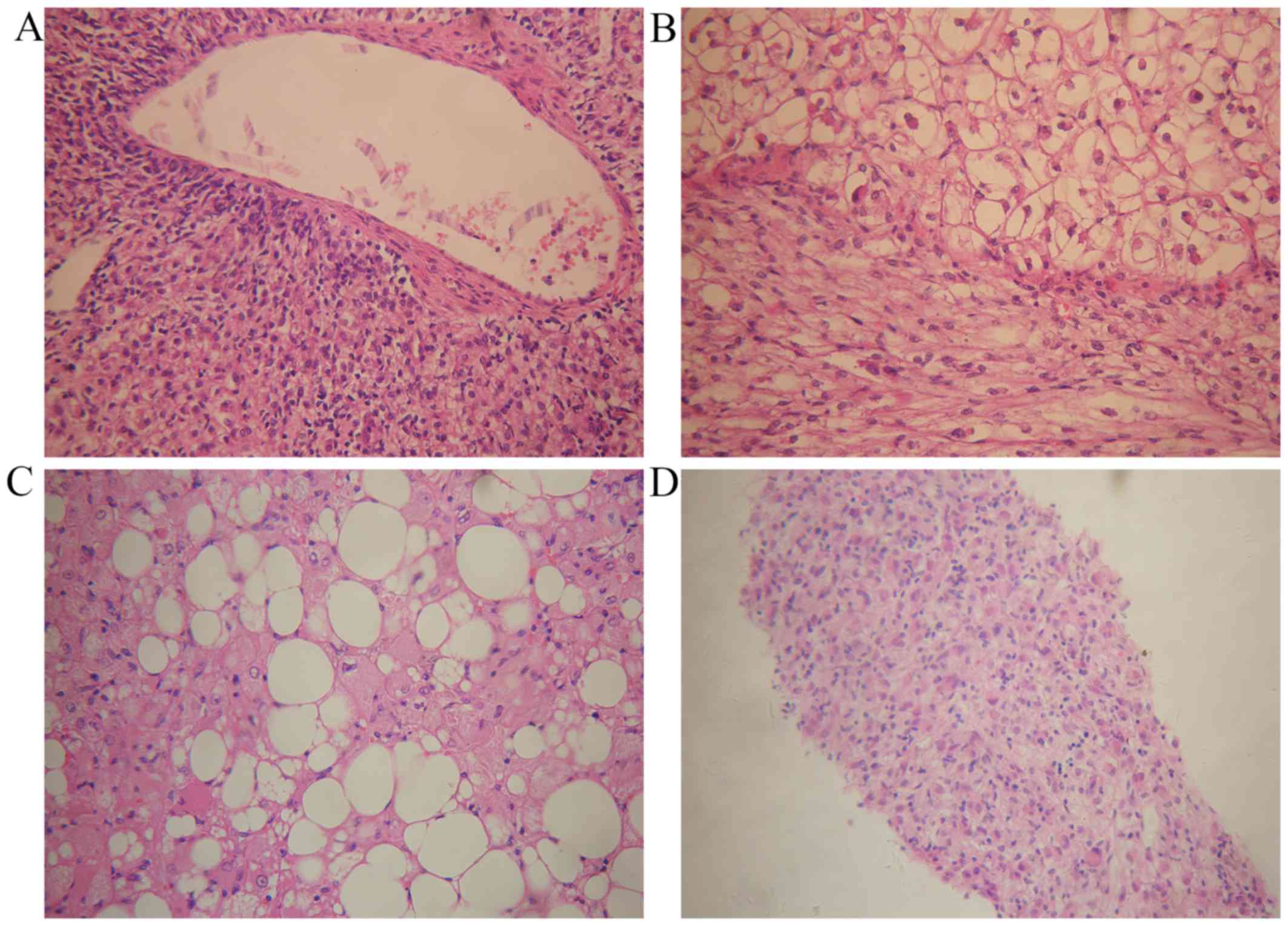Hepatic perivascular epithelioid cell neoplasm: A clinical and pathological experience in diagnosis and treatment
- Authors:
- Published online on: February 16, 2017 https://doi.org/10.3892/mco.2017.1168
- Pages: 487-493
-
Copyright: © Chen et al. This is an open access article distributed under the terms of Creative Commons Attribution License.
Metrics: Total
Views: 0 (Spandidos Publications: | PMC Statistics: )
Total PDF Downloads: 0 (Spandidos Publications: | PMC Statistics: )
Abstract
Hepatic perivascular epithelioid cell neoplasm (PEComa) is a rare type of neoplasm derived from mesenchymal tumors that is often misdiagnosed as hepatocellular carcinoma (HCC), hepatic hemangioma or other liver malignancies. The clinical and histological characteristics of PEComa have yet to be fully documented. To optimize the diagnosis and treatment of the disease, a retrospective analysis was performed to investigate the clinicopathological characteristics of 7 patients diagnosed with hepatic PEComa in the Sun Yat‑Sen Memorial Hospital between January 2004 and December 2015. Briefly, all the patients lacked specific symptoms, and a serological examination provided no further useful information. Additionally, non‑specific imaging manifestations were observed. Microscopically, detection of epithelioid or spindle‑shaped cells with adipocytes was suggestive of the disease, and an analysis of biomarkers, including the monoclonal antibody HMB‑45, the melanocytic differentiation marker, Melan‑A, and smooth muscle α‑actin (SMA), helped to confirm the diagnosis. Regarding the treatment, 6 patients (85.7%) received surgical resection procedures, and 1 patient (14.3%) was admitted for tumor arterial embolization and percutaneous microwave coagulation therapy. After a follow‑up period of 12‑20 months, no recurrence was observed. Taken together, hepatic PEComa should be suspended in patients with a liver tumor with asymptomatic manifestation and normal serological test results. In imaging studies, hepatic PEComa was able to mimic HCC, hepatic hemangioma and metastatic tumor, although the mass did not invade the adjacent organs and vessel. The definitive diagnosis was made on the basis of the typical morphological features and notable markers of the tumor tissue. It is recommended that patients with PEComa in a benign pattern deserve serial imaging follow‑up, but surgery is indicated in patients suffering from large tumors (>5 cm), or progressive enlargement or malignant tendency.













